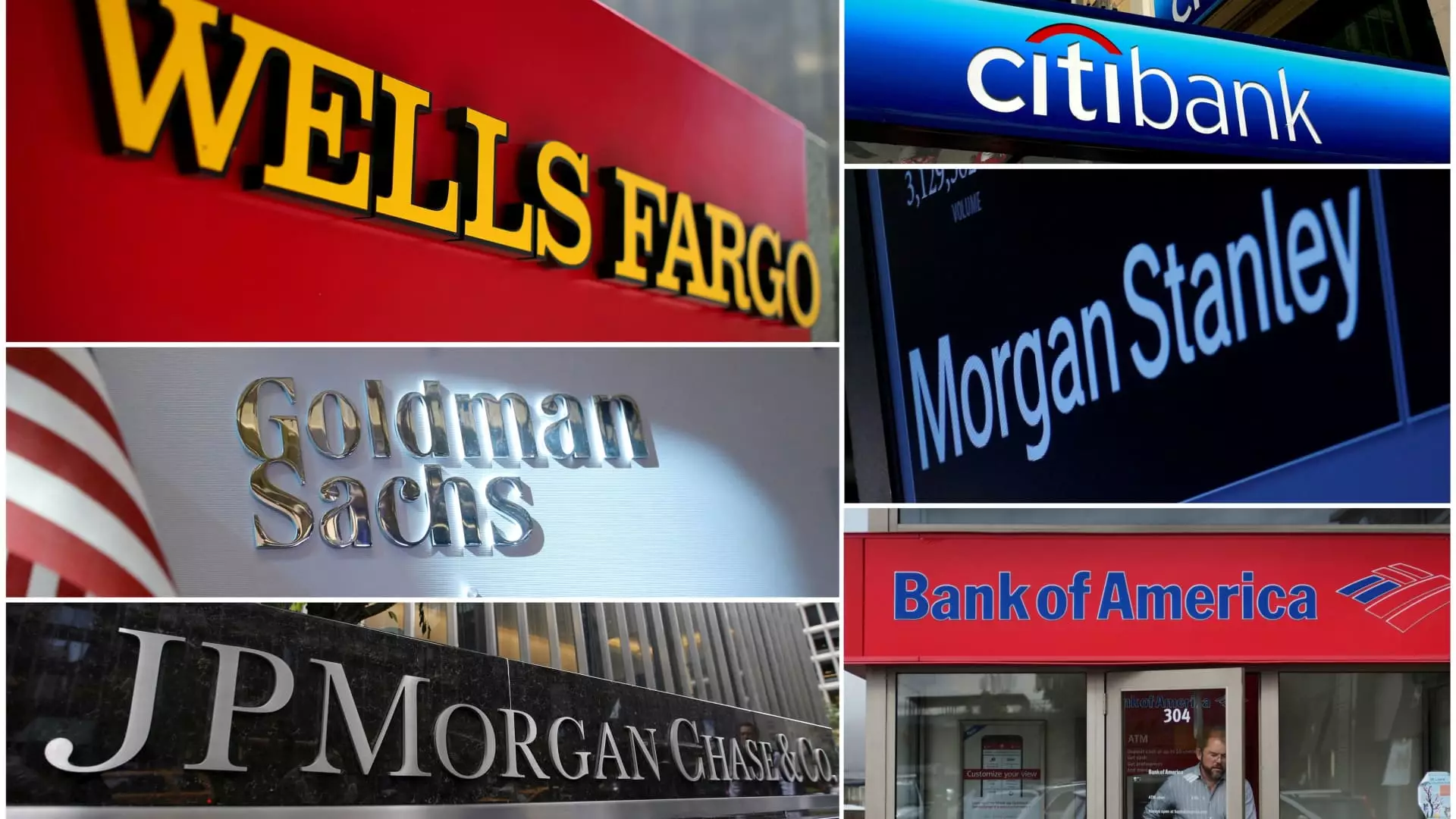The Trump administration’s recent regulatory proposals represent a significant pivot towards deregulating Wall Street, particularly regarding the nation’s largest banks. Specifically, the Federal Reserve has proposed alterations to capital requirements established in the wake of the 2008 financial collapse. These new measures aim not only to bolster the lending capacity of institutions like Goldman Sachs and Wells Fargo, but also to stimulate greater market activity by making it easier for these banking giants to acquire U.S. government bonds. Such steps mark a critical moment in the ongoing relationship between government oversight and Wall Street autonomy, igniting earnest debates about the implications of such actions.
A Delicate Balancing Act
It’s essential to approach these changes with a discerning mindset. The enhanced supplementary leverage ratio, which currently applies uniformly across systemic banks, is set to face a more individualized assessment under the new guidelines. The proposal allows for a more nuanced approach to capital reserve requirements based on specific asset configurations. While advocates claim this will foster resilience, it also risks amplifying the challenges of systemic risk if individual banks miscalculate their capital structures. The evaluation period given by the Federal Reserve for public comments demonstrates transparency but could also serve as a siren call for banks to push for more leniency in capital requirements.
Proponents like Michelle Bowman, the Fed vice chair for supervision, argue that proactive regulation is necessary to mitigate market disruptions. However, the question remains whether this approach might lead to misguided confidence that prompts major financial institutions to over-leverage themselves. Investments should encourage responsible risk-taking, but deregulation does not automatically guarantee a more robust financial environment; the opposite could easily ensue.
The Market’s Mixed Signals
Investors seem initially pleased with the Fed’s announcement, as reflected in the uptick of the Invesco KBW Bank ETF and particular financial stocks. But that initial excitement shouldn’t distract us from the long-term implications. With a more fluid regulatory framework, larger banks like Wells Fargo and Goldman Sachs may find themselves with the opportunity to bolster dividends and expand their operational scope. While this can yield immediate benefits, the underlying issue of whether this will jeopardize overall bank stability lingers ominously in the background.
The allure of greater profits often overshadows sound financial principles. If banks prioritize shareholder dividends over the stability of their capital reserves, we run the risk of reconstructing a precarious foundation reminiscent of pre-2008 conditions. To hear Wall Street executives opine that capital restrictions have become unreasonably stringent rings hollow when considering the gravity of the potential fallout from a risk-intense culture.
A Double-Edged Sword
While the effort to relax regulatory oversight aims to invigorate lending and investment activities, it raises significant concerns about systemic risk. Dissent within the Federal Reserve, particularly from governors like Adrian Kugler and Michael Barr, sheds light on fears that these regulatory rollbacks could foster a fragile financial ecosystem. The very institutions designed to absorb shocks and ensure stability may inadvertently become riskier in a hunt for short-term returns. Such tension between stimulating growth and preserving stability is a complex dilemma that shouldn’t be overlooked.
If banks are incentivized to enter high-return activities at the expense of prudent asset management, we could witness an exodus of investor confidence. Would the focus shift from capital buffering to aggressive, risky investments that prioritize immediate gains? We need to remember that a beautifully composed symphony of economic growth can quickly devolve into chaotic discord if the essentials of sound banking practices are forsaken.
The Future of Financial Regulation
The broader implications of this deregulation extend beyond mere numbers on a balance sheet. The shift to a more individualized approach to bank regulation could redefine how the financial sector adapts to future crises. There’s no route-free zone in politics, and financial regulations will likely be retraced as the ripple effects of today’s decisions unfold over time.
If this wave of deregulation continues, we may face a future where the pendulum swings too far in the opposite direction—a potential nightmare for regulatory bodies who will eventually have to reckon with institutions that have overextended themselves. In the pursuit of economic vitality, let’s not overlook the importance of building robust financial structures that can withstand tumultuous periods. The stakes are indeed high; the mask of progress can hide risky undercurrents lurking beneath the surface.

